Legendary battles, royal celebrations, towering turrets, and elegant courtyards are some of the things we associate with castles. These iconic buildings, in their countless shapes, styles, and sizes, have inspired humans for centuries with a sense of majesty and grandeur.
While most castles are impressive feats of architecture and engineering, some exist on a larger scale than others. We’ll take a look at some of the largest castles in the world in this post, focusing on those that are truly immense.
What is a Castle?
The answer to this question isn’t necessarily straightforward. According to the Merriam-Webster dictionary, a castle is “a large fortified building or set of buildings.” This definition includes a much wider range of possibilities than the popular image of medieval turrets and royal occupancy.
More specific ideas of what makes a castle include the notion that a castle is of the medieval period, is fortified, and served as the residency of a king or queen at some point.
It can also be tricky to distinguish between a palace, a fort, and a castle. A palace is typically a building or group of buildings that served as a royal residence and had little fortification or military use. A fort, on the other hand, is a building constructed for almost exclusive military purposes. A castle is often something of a combination of a palace and a fort.
History of Castles
The first castles in the world were built as the result of a need to protect accumulated wealth and resources. These early fortifications consisted of buildings surrounded by high walls and were located in Europe, Africa, and Asia.
Western Europe’s first castles were built by the Normans after they invaded England in 1066. They were built in order to protect supply routes and newly-conquered territory. Over time, castles served many functions in Europe. They were important military structures, prisons, statements of power, and private residences. Aesthetics and design eventually became more important elements of castles.
Castles have also historically been built across Asia and Africa, with some of the most impressive examples existing in Japan, China, Egypt, and Tunisia. Some of the castles on this list are much older than the first European castles, and one dates back to 3000 BCE.
Finding the Biggest Castles in the World
The lack of a singular, specific definition for castles is one of the reasons it’s difficult to come up with a definitive list of the world’s largest castles. Deciding which metric should be used as a criterion for measuring castle size is another.
For this post, we chose the largest castles in the world based on floor space, measured in square meters/feet. Renovations and conservation efforts can make this hard to determine at times, but there’s no doubt that all of the castles on this list are exceptionally grand in size.
| Rank | Name | Location | Size |
| 1 | Malbork Castle | Poland | 143,591 square meters (1,545,601 square feet) |
| 2 | Mehrangarh Fort | India | 81,227 square meters (874,320 square feet) |
| 3 | Prague Castle | Czech Republic | 66,761 square meters (718,609 square feet) |
| 4 | Windsor Castle | England | 54,835 square meters (590,293 square feet) |
| 5 | Hohensalzburg Fortress | Austria | 54,523 square meters (586,881 square feet) |
| 6 | Spiš Castle | Slovakia | 49,485 square meters (532,652 square feet) |
| 7 | Buda Castle | Hungary | 44,674 square meters (480,867 square feet) |
| 8 | Himeji Castle | Japan | 41,468 square meters (446,358 square feet) |
| 9 | Citadel of Aleppo | Syria | 39,804 square meters (428,447 square feet) |
| 10 | Edinburgh Castle | Scotland | 35,737 square meters (384,670 square feet) |
10. Edinburgh Castle
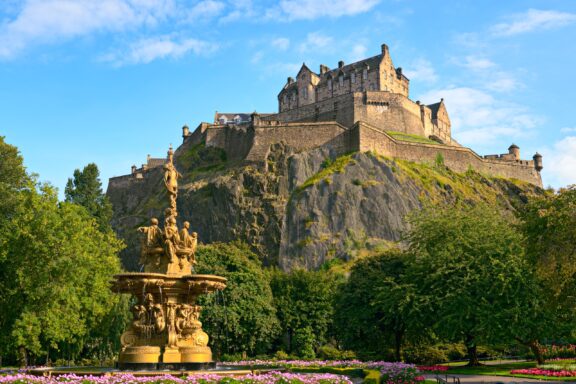
Square meters: 35,737
Located on the aptly named Castle Rock in Edinburgh Scotland, this castle is an important piece of Scottish heritage. It has served both as a royal residence and as a military barracks since its construction under King David I in the 12th century, though little of the current architecture is older than the 16th century.
St Margaret’s Chapel, which is considered the oldest building in Scotland, is located in Edinburgh Castle and was restored in the 19th century. The chapel features Romanesque architecture.
The castle is perched atop the plug of an extinct volcano and commands impressive views. This, in conjunction with its historical and cultural significance, makes it the second-most visited tourist site in Scotland.
9. Citadel of Aleppo
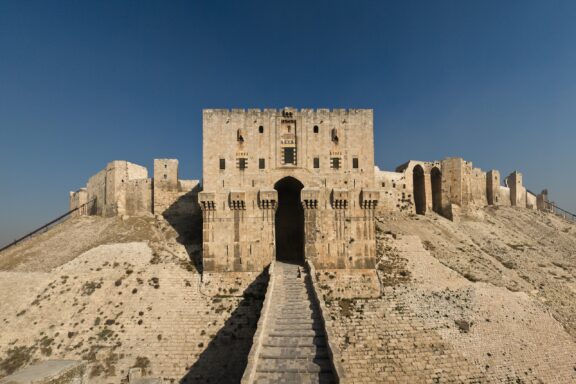
Square meters: 39,804
The Citadel of Aleppo is an impressive castle not only for its size but also for its age. With its earliest structures dating back to the third millennium BCE, it is often considered the oldest castle in the world.
Many civilizations have occupied the citadel over the millenia, and it has been destroyed and rebuilt many times over. The majority of the construction standing today was likely completed by the Ayyubid Empire in the 12th century.
In recent history, the Citadel of Aleppo was significantly damaged in the 2014 Battle of Aleppo in the Syrian civil war and then again in a 2023 earthquake.
8. Himeji Castle
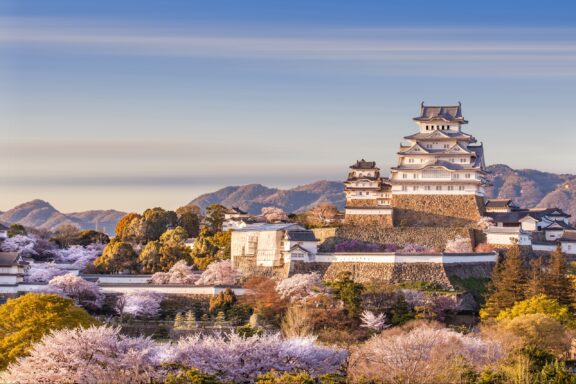
Square meters: 41,468
Named for the city it calls home, Himeji Castle is a striking example of Japanese castle architecture. The castle’s elegant exterior is wrapped in white and is said to resemble a bird taking flight, earning it the nickname Shirasagi-jō, or “White Heron Castle.”
In addition to aesthetic beauty, Himeji Castle is highly functional. Its construction includes advanced defense systems and protection devices such as moats, “stone drop windows,” and loopholes, all of which facilitated the protection of the castle against invading forces.
Himeji Castle’s history began in the 14th century, though additions and changes were made to the complex until the 17th century. It became one of Japan’s first UNESCO World Heritage Sites in 1993.
7. Buda Castle
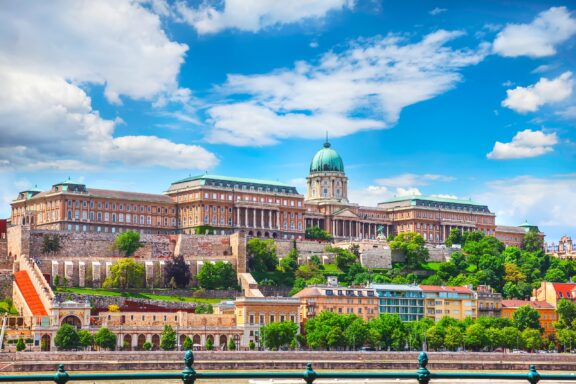
Square meters: 44,674
Buda Castle is located in the capital of Hungary, Buda Castle is one of the most impressive attractions in Budapest. Sprawling over an area of more than 40,000 square meters, it’s one of the largest castles in the world.
This castle was originally completed in 1265, but the gigantic baroque palace that dominates the site was built more than 500 years later in the middle of the 18th century.
Situated at the southern end of Castle Hill in Budapest, Buda Castle is surrounded by the city’s tourist sector and is one of the top tourist attractions in Hungary.
6. Spiš Castle
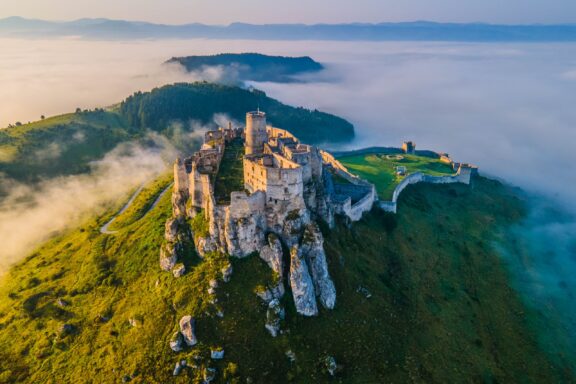
Square meters: 49,485
Located in the Košice and Prešov Regions of Slovakia, Spiš Castle is among the largest castles in Central Europe. Interestingly, this castle has belonged to three separate nations over its extensive history.
Spiš Castle was initially constructed in the 12th century on the site of a previous castle in what was then Szepes County of Hungary. The castle was the home of various Hungarian kings and then the Csáky family until the state of Czechoslovakia took it over in 1945 and Slovakia gained independence in 1992.
Now a museum, the castle is located 370 km from Bratislava, the capital of Slovakia, and adjacent historical sites are the ecclesiastical town of Spišská Kapitula and the village of Žehra.
5. Hohensalzburg Fortress
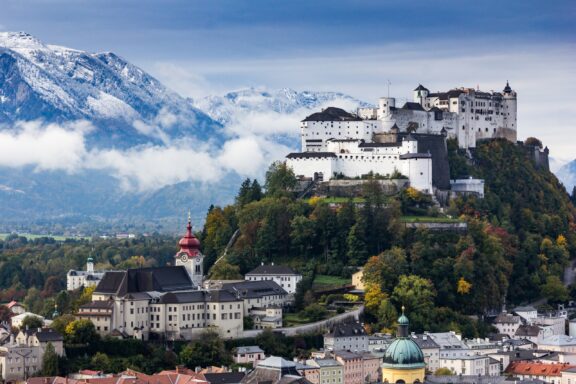
Square meters: 54,523
The Hohensalzburg Fortress undoubtedly deserves a spot among the largest castles in the world, stretching across more than 50,000 square meters of land in the city of Salzburg, Austria. It’s also one of the oldest castles on this list, with construction that began in 1077.
Commanding a 360 degree view of Salzburg and the surrounding countryside, Hohensalzburg is strongly fortified. There has only ever been one attack on the castle, which occurred as part of the German Peasants’ War in 1525. The attack was unsuccessful.
In more recent history, the castle was used to house Italian prisoners during World War I as well as Nazi activists before Germany annexed Austria in 1938. Today, it’s possible to visit the fortress as a museum.
4. Windsor Castle

Square meters: 54,835
Serving as the family home of British monarchs for more than 900 years, Windsor Castle is one of the largest and oldest medieval castles in the world. Originally constructed in the 11th century by the order of William the Conqueror, the castle has since functioned as a fortress and as a royal palace. It is a symbol of British power and tradition.
Still serving as a royal home today, Windsor Castle is the largest inhabited castle in the world and the longest-occupied palace in Europe. 40 monarchs have called the castle home over its long history, and tourists can book tickets to see it for themselves.
3. Prague Castle
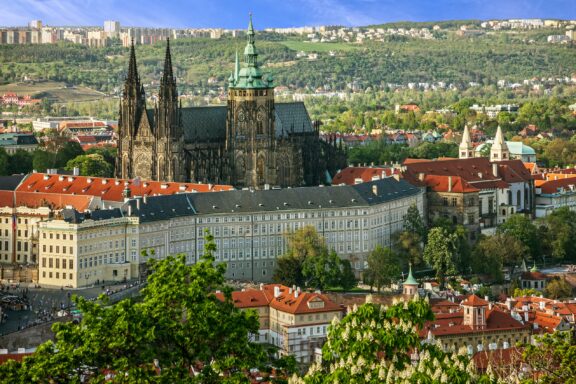
Square meters: 66,761
If you ask Guinness World Records, Prague Castle is the largest ancient castle in the world. It’s located in the center of the city of Prague and is one of the most important cultural institutions in the Czech Republic as an ancient symbol of the Czech State.
The history of this castle dates back to the 9th century when construction began around the year 880. The first of the many buildings located in the Prague Castle complex to be constructed was the Church of the Virgin Mary.
Fortifications were improved and the royal palace was rebuilt in the 14th century, but a major fire destroyed a great deal of the castle in 1541. The castle was then restored in the later part of the 18th century and became a presidential residence in 1918. It still serves as the official seat of the president of the republic.
2. Mehrangarh Fort
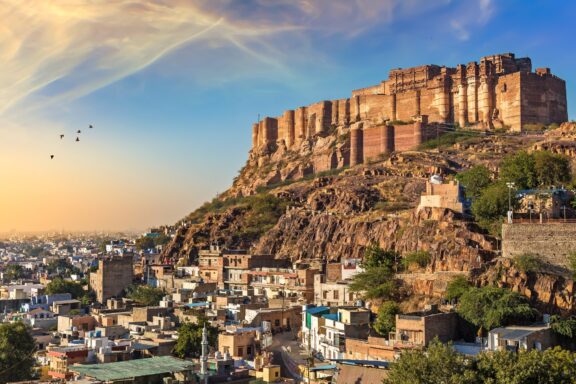
Square meters: 81,227
There are few sights more impressive than the Mehrangarh Fort looming over the land in Jodhpur, India. The giant castle complex sits atop a 125-meter-tall hill and was built in the 15h century. Impressive architecture like this is one of the many reasons to visit India.
Within the fort’s walls are a great number of buildings, including palaces, temples, and courtyards. Intricate carvings decorate the palaces, and there is also a Mehrangarh Museum that houses a large collection of art from the 17th, 18th, and 19th centuries.
Cultural performances also take place at the castle complex, such as music and dance performances. The fort has also appeared in a number of movies such as The Jungle Book and The Dark Knight Rises.
1. Malbork Castle
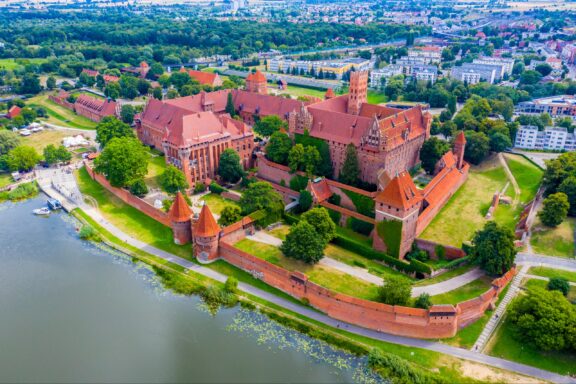
Square meters: 143,591
Covering more than 140,000 square meters, Malbork Castle in Poland is the largest castle in the world. Also known as the Castle of the Teutonic Order of Malbork, this UNESCO World Heritage Site was built in the 13th century.
Originally built by the Teutonic Knights, Malbork Castle was then sold to the King of Poland in 1457 and became the Polish royal residence until 1772. From this point until 1945, the castle was under German control. Since becoming part of Poland once again after World War II, Malbork Castle has undergone ongoing restorations.
The Malbork Castle Museum was opened in 1961 and features historical art as well as hosts cultural events.
More About Castles
Are any of the largest castles in the world open to the public?
Yes, many of the world’s largest castles are now open to the public. There is often a museum that is open to visitors in the castle, and guided tours are also commonly available.
What is the oldest castle in the world?
The Citadel of Aleppo, which is also one of the largest castles in the world, is often considered to be oldest. It’s located in Syria and dates back to as early as 3000 BCE.
What were the largest castles used for?
The castles on this list were used for a variety of things and usually consisted of many different buildings. They were often built as royal residences or for military purposes, and many of them are now museums.
What country has the most castles in the world?
The great majority of the world’s castles are located in Western Europe. Germany is the country with the most castles; there are an estimated 25,000 within its borders. Wales has the most castles per square mile.
Do any castles still serve as royal residences?
Although most of the world’s castles are no longer inhabited by royalty, there are a few exceptions. Windsor Castle in England is a notable exception, as it has been continuously occupied by royalty for hundreds of years.
Prague Castle is also the official residence of the Czech Republic President, though the president’s actual living quarters are located elsewhere.